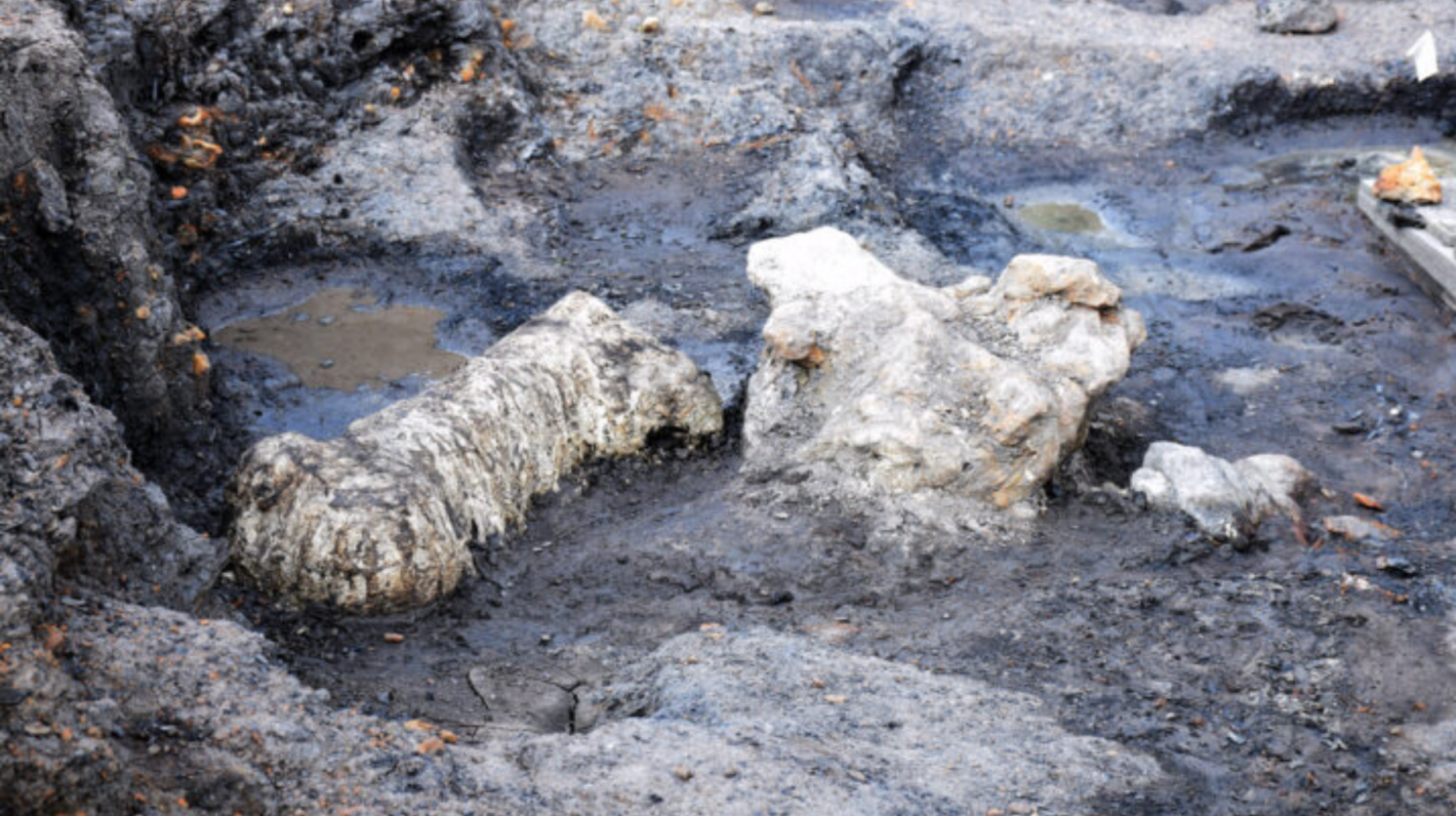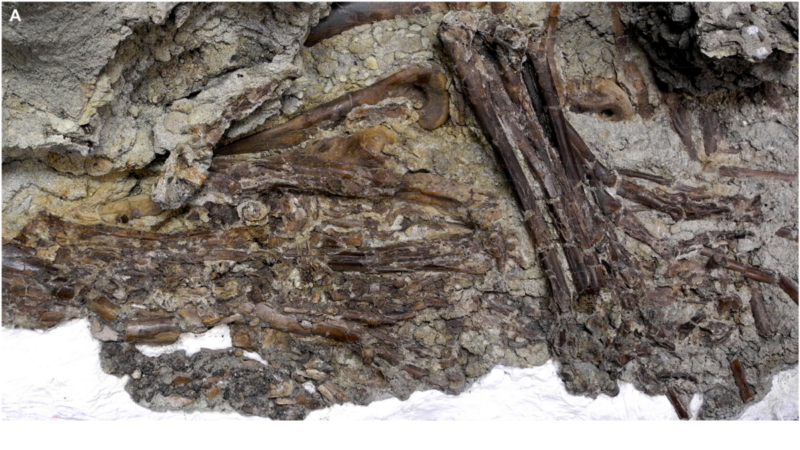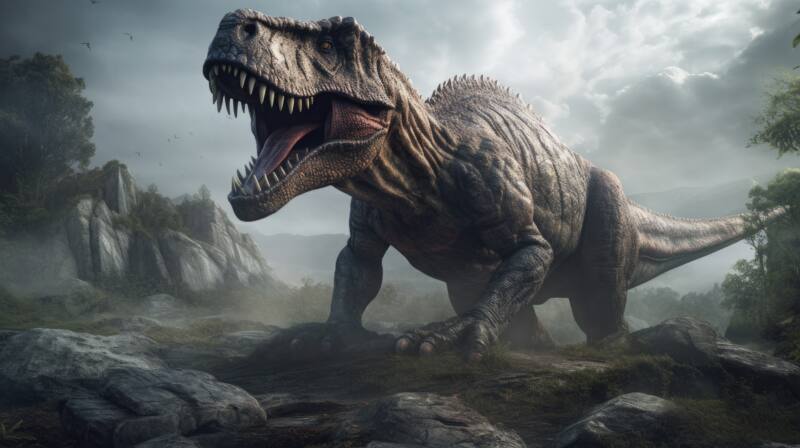Paleontologist and volunteers find rare dinosaur bone in fossil park
A paleontologist and a team of volunteers recently made a historic discovery at a Maryland park known for its fossils, according to an announcement from the Maryland-National Capital Park and Planning Commission. The find includes the largest theropod fossil in Eastern North America.
The rare fossil, a 3-foot-long shin bone from a theropod (a carnivorous dinosaur family that includes the Tyrannosaurus rex), was discovered on April 22 at Laurel, Maryland’s Dinosaur Park, a fossil preservation park where the public can observe and help staff members with paleontology work.
JP Hodnett, Prince George’s County Dinosaur Park paleontologist and program coordinator, was working in the preservation area with volunteers when he discovered the large fossil, which he believes is an Acrocanthosaurus, a 38-foot cousin to the T. rex, which lived 50 million years later. This is a rare find in the park; until now, paleontologists and citizen scientists had only found Acrocanthosaurus teeth. Like other fossils in the park, the shin bone is likely from the Early Cretaceous Period, around 115 million years ago.
MORE: Dinosaur’s massive footprint discovered in the UK
Between the fossilized thigh bone and other fossils found in the same area, the Dinosaur Park has now been classified as a “bonebed,” a classification given by paleontologists to describe an area where “bones of one or more species are concentrated within a geologic area,” according to the park. This new classification makes Dinosaur Park the first bonebed in Maryland since 1887.
“Finding a bonebed like this is a dream for many paleontologists as they can offer a wealth of information on the ancient environments that preserved the fossils and provide more details on the extinct animals that previously may have only been known from a handful of specimens,” Hodnett said in the statement. “Most paleontologists have to travel across the country or go overseas to find something like this, so having this rare find so close to home is fantastic!”
Bill Tyler, the director of Prince George County Parks and Recreation, shared more photos from the dig on social media:
MORE: New study suggests a massive dust cloud killed the dinosaurs
The Smithsonian verified the fossil finds and the bonebed as the “most significant collection of dinosaur bones along the eastern seaboard” in the last century.
“Dinosaur fossils are exceptionally rare in the eastern US, and among these only Maryland has produced dinosaurs from the Early Cretaceous Period,” said Smithsonian paleontologist Matthew Carrano in the statement. “Typically, only one or two bones are found at a time, so this new discovery of a bonebed of fossils is extremely important.”






